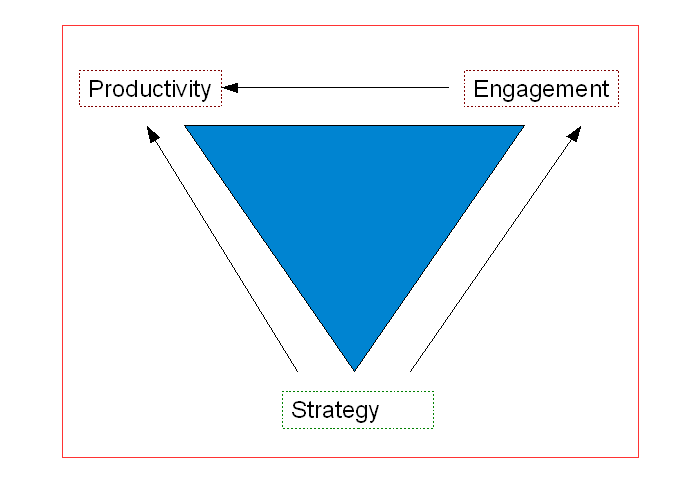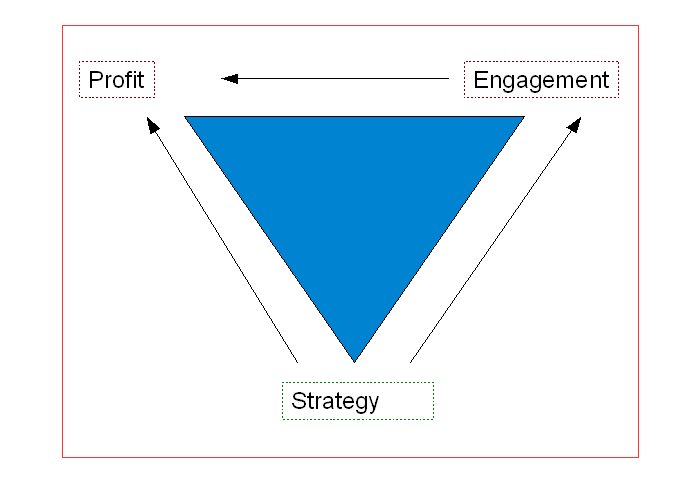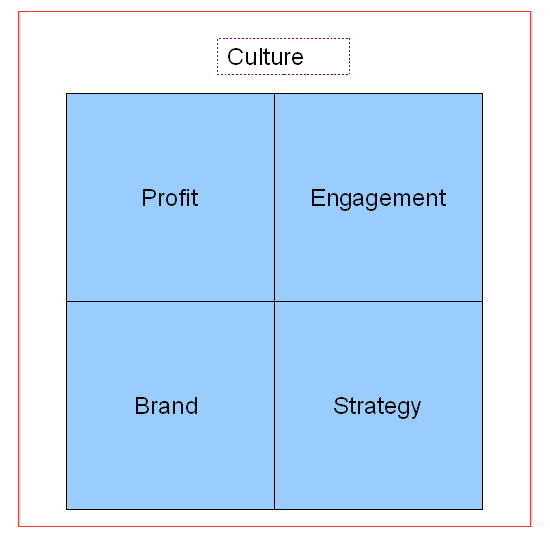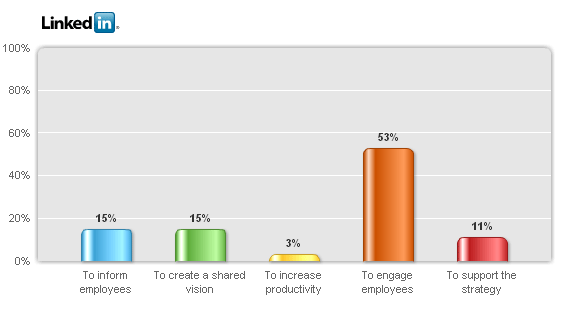A couple of weeks or so ago I set up one of those polls in LinkedIn asking what the single most important aim of internal comms was. The chart of the results so far is thus:
The discussion continued on LinkedIn, with a lively engagement on what the most importan aspect might be. Now of course, this is all a bit phantasmagorical as in real life there’s no single one most important aspect, but the discussion did draw out some interplays between the different aspects.
I tend to agree with Nicky Fried’s comment that:
If we, as communicators, are able to link each employee to the corporate vision – the rest takes care of itself.
but as we see above most people disagree and think engagement is the most important aspect rather than the vision or strategy. There was also an important contribution from Mark Barwick, who argued that I’d made an error by missing out Productivity as the key aim. For Liam FitzPatrick however, asking what aim might be most important implied conflict or polarities between ‘productivity/strategy/engagement’.
My view on this is that we’re not talking about polarities and certainly not about conflicts, but different spheres of action and influence. I’d still place strategy as the most important aim and align its relationship with engagement and productivity as so:

But then, as I pointed out to Mark, the strategy might not be productivity, it could be to say, increase market share. The ultimate end, and the ultimate end of all business, would be Profit. We might therefore, replace Producivity with Profit as the driver. Thus all internal communications becomes a drive to profit.
We therefore end up with a chart such as this:

This creates a very instrumental, one might almost say brutalist picture of the enterprise. What’s missing is the ethos of the company – it’s brand and its culture. For me at least, the brand is all about internal communications – we’re articulating the brand to our shared internal audience. So what we need to do is bring this branding aspect into the equation:

Taken together these aspects create the enterprise’s culture. One can then begin to imagine who the communications would change as each of these gains ascendancy over the other. Profit must always have the final say – or the business goes out of business. But if profit becomes the only driver, what then for internal communications?
I think this is where Visteon came unstuck. They created a Culture, complete with a well-defined Corporate Social Responsibility and communicated it well enough so that their employees not only knew about it, they both understood it and bought into it. It was when Visteon itself, driven by the profit motivator, forgot that aspect of its culture, that the workers of Visteon decided to occupy their plants.
Ethics and Integrity Policy, Visteon.
